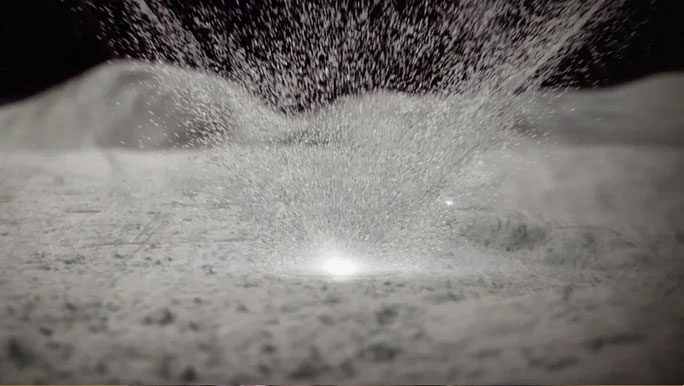Kamo’oalewa, a “quasi-moon” of Earth, may be a lost part of the Moon.
A research team led by planetary scientist Renu Malhotra from the University of Arizona (USA) has proposed a mechanism for the mysterious existence of Kamo’oalewa, a peculiar asteroid discovered in 2016.
According to this theory, Kamo’oalewa is actually a fragment of Earth’s only official satellite – the celestial body known as the Moon – that broke apart in an unrecorded collision.

Graphic showing an impact on the Moon, the event that created Kamo’oalewa – (Graphic: NASA).
According to Space.com, this scenario explains the mysteries surrounding Kamo’oalewa. As an asteroid, it should orbit the Sun, although this orbit occasionally brings it close to our planet.
However, Kamo’oalewa seems to be more entangled with Earth than the Sun, acting as a “quasi-moon” in orbit, similar to the “second moon” 2023 FW13 recently discovered this year.
Moreover, Kamo’oalewa has an unusual longevity in predictive models: It is expected to linger around Earth for millions of years, rather than just a few decades like other “lost” objects pulled in by Earth’s gravity.
Using spectroscopy – measuring specific wavelengths of light absorbed and emitted by chemical elements, scientists have noticed something unusual: the chemical characteristics of Kamo’oalewa closely resemble those of the Moon.
This composition is a hint suggesting it is a part of the Moon.
This discovery offers significant scientific value.
- First, it makes Kamo’oalewa a “fossil” revealing how asteroids could have taken a piece of the Moon, contributing to our understanding of the history of this satellite.
- Second, understanding Kamo’oalewa will provide scientists with additional data about near-Earth objects in general, which often have a small probability of colliding with us, thereby aiding in the completion of Earth defense missions.
The research has just been published in the scientific journal Nature Communications Earth & Environment.


















































